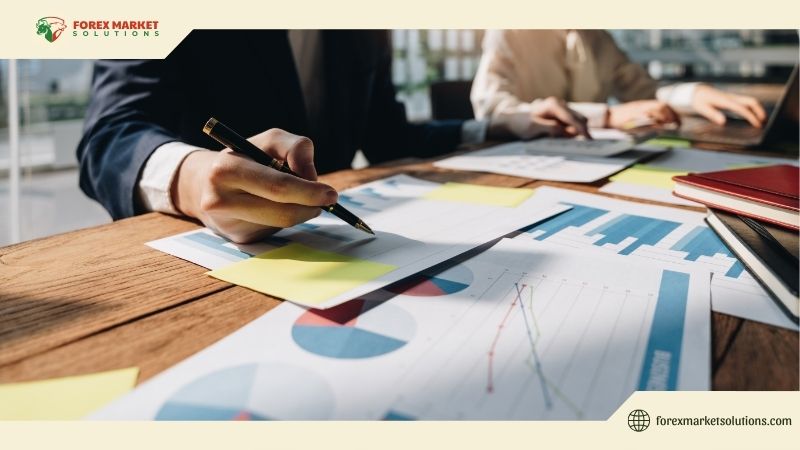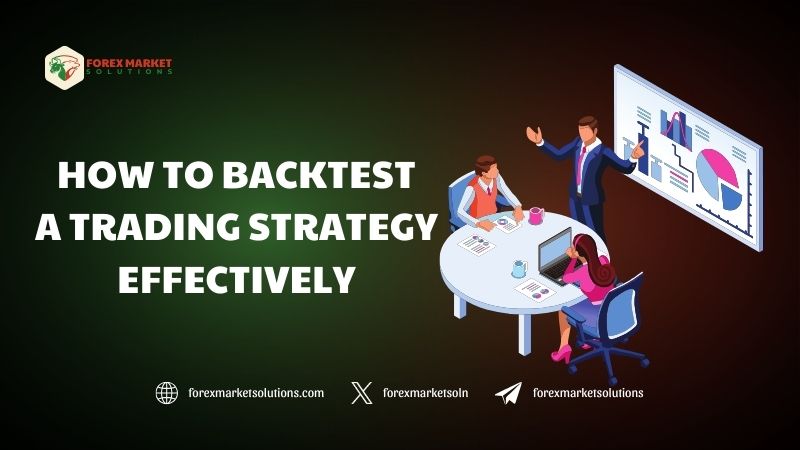In the world of Forex trading, success hinges on more than intuition—it demands a proven plan, rigorously tested against real market conditions. For traders aiming to sharpen their edge in 2025, understanding how to backtest a trading strategy effectively is a critical skill that separates guesswork from precision. Backtesting involves simulating a trading strategy on historical data to evaluate its performance, offering insights into profitability, risk, and reliability before risking real capital. As markets evolve with economic shifts, technological advancements, and heightened volatility, this process becomes a cornerstone for building confidence and consistency. This comprehensive guide explores the art and science of backtesting, providing practical steps to refine your approach in the year ahead.

The Forex market’s complexity—currency pairs fluctuating with news, trends, and sentiment—makes untested strategies a gamble. Knowing how to backtest a trading strategy effectively empowers traders to validate ideas, from simple moving average crossovers to complex breakout systems, ensuring they hold up under scrutiny. In 2025, with digital tools like TradingView and MetaTrader at your disposal, backtesting is more accessible than ever, yet it requires method and discipline to yield meaningful results. Whether you’re a beginner crafting your first strategy or a seasoned trader optimizing for new conditions, this article offers a clear path to test and perfect your trades.
The Importance of Backtesting in Trading
Before diving into the process, it’s worth exploring why backtesting matters. Trading without testing is like sailing without a map—your strategy might seem sound in theory, but real markets can sink it fast. Backtesting bridges this gap, letting you apply rules—say, buying EUR/USD when the 50-day moving average crosses the 200-day—to past data, revealing how it would have performed. Did it net 500 pips over a year, or lose half your account? This hindsight clarifies strengths and flaws, saving you from costly live mistakes.
In 2025, with markets reacting to interest rate hikes, crypto crossovers, and geopolitical tensions, untested strategies risk amplified losses. Backtesting offers a safety net, quantifying metrics like win rate, drawdown, and profit factor—say, 60% wins, 10% max loss, 1.5 return-to-risk. It builds confidence too; seeing a strategy succeed over five years of USD/JPY data reassures you it’s not a fluke. Mastering how to backtest a trading strategy effectively turns ideas into evidence, grounding your trading in data rather than hope.
This process also hones adaptability. Markets shift—2025’s volatility might favor breakouts over trends—so backtesting past years ensures your strategy fits current dynamics, a proactive edge in a fluid landscape.

Preparing to Backtest Your Strategy
Effective backtesting starts with preparation, setting the stage for reliable results. First, define your strategy clearly. Take a breakout system: buy GBP/USD when it breaks above the previous day’s high (e.g., 1.3050), stop at the low (1.3000), target twice the risk (1.3150). Write down rules—entry, exit, position size (0.1 lots)—to avoid vague guesses later.
Choose a platform—MetaTrader 5, TradingView, or Excel—based on your needs. MetaTrader’s Strategy Tester suits Forex, offering automation; TradingView’s replay feature lets you scroll manually; Excel works for custom calculations. In 2025, with platforms enhancing AI-driven testing, pick one matching your skill level. Gather historical data—five years of EUR/USD hourly bars from your broker—ensuring quality (no gaps) for accuracy.
Set a timeframe and account size—say, $5,000 over 2020-2024—to mirror your live plan. This groundwork primes you to learn how to backtest a trading strategy effectively, anchoring your test in realism.
How to Backtest a Trading Strategy Effectively: Step-by-Step
The heart of how to backtest a trading strategy effectively lies in a structured process, blending diligence with analysis. Begin by loading your data—say, USD/CAD daily candles from 2019-2023—into MetaTrader. Input your strategy: buy at a 20-day moving average pullback (1.3700), stop 50 pips below (1.3650), target 100 pips (1.3800). Run the tester, simulating trades over this period, tracking each entry and exit.
Manually, use TradingView’s bar replay. Start at January 2019, scroll forward, and log trades—buy at 1.3705 on June 5, sell at 1.3805 on June 8—noting profit (100 pips, $10 on 0.1 lots). Repeat across months, capturing 50-100 trades for statistical weight. Excel aids here—input dates, prices, and outcomes, calculating totals like $500 profit, 55% win rate.
Analyze key metrics: total return (e.g., 20% over four years), max drawdown (8% dip), and Sharpe ratio (1.2, decent risk-adjusted return). In 2025’s choppy markets, test across bullish (2021) and bearish (2022) phases—did it hold? Adjust variables—tighten stops to 30 pips—if losses spike, ensuring robustness. This methodical approach defines how to backtest a trading strategy effectively, turning raw data into insights.

Refining Your Backtest for Accuracy
Accuracy elevates backtesting from guesswork to precision. Account for spreads—1.5 pips on EUR/USD cuts $1.50 per 0.1 lot trade—mirroring live costs. Include commissions if your broker charges—$5 round-trip tweaks net profit. In 2025, with tight spreads from competition, these details matter less but still refine results.
Avoid overfitting—tweaking a strategy to perfectly fit 2023’s USD/JPY uptrend risks failure in 2025’s sideways market. Test multiple pairs (GBP/USD, AUD/USD) and periods—2019’s volatility, 2020’s crash—to ensure flexibility. Cross-check with forward testing—run it live on a $100 demo for a month—bridging past and present. This rigor sharpens how to backtest a trading strategy effectively, guarding against curve-fitting traps.
Data quality counts too. Use broker-sourced history—OANDA’s 10-year EUR/USD set—over generic feeds, catching real gaps or spikes (e.g., Brexit 2016). This realism ensures your backtest reflects live trading, not a sanitized fantasy.
Interpreting Results and Adjusting
Results guide your next steps in how to backtest a trading strategy effectively. A 15% annual return with 5% drawdown on $5,000—$750 profit, $250 max loss—signals promise, but dig deeper. A 40% win rate with a 2:1 reward-to-risk (50-pip wins, 25-pip losses) might still work if losses stay small. Compare to benchmarks—did it beat a buy-and-hold 5% gain?
If drawdowns hit 20%—$1,000—or wins dip below 30%, tweak. Shorten the moving average to 10 days, raising entries to 60% but shrinking profits to 40 pips. Retest—did risk drop? In 2025, with AI tools analyzing stats, refine fast, keeping what fits current volatility—like tighter stops for news-driven swings.

Avoiding Common Backtesting Pitfalls
Even a solid process falters without care. Looking ahead—peeking at 2023 data while testing 2022—skews decisions; scroll blind or automate to stay honest. Ignoring news—trading through 2020’s COVID crash without context—distorts reality; note major events (Fed hikes) in your log. In 2025’s fast markets, these slips ruin how to backtest a trading strategy effectively—discipline keeps it true.
Over-optimism misleads too. A 50% return might ignore slippage—price slipping 2 pips on execution—cutting real gains. Test conservatively, assuming worse spreads, to match live conditions.
Backtest for Success
Mastering how to backtest a trading strategy effectively is your ticket to Forex success in 2025. By testing rigorously—defining rules, analyzing data, refining flaws—you turn ideas into proven systems, ready for volatile markets. This process isn’t just preparation—it’s power, ensuring every trade rests on evidence, not chance. Start backtesting today, and build the confidence to conquer 2025’s Forex frontier with how to backtest a trading strategy effectively.
For more trading tools and insights, follow Forex Market Solutions – your partner in mastering markets in 2025 and beyond.
